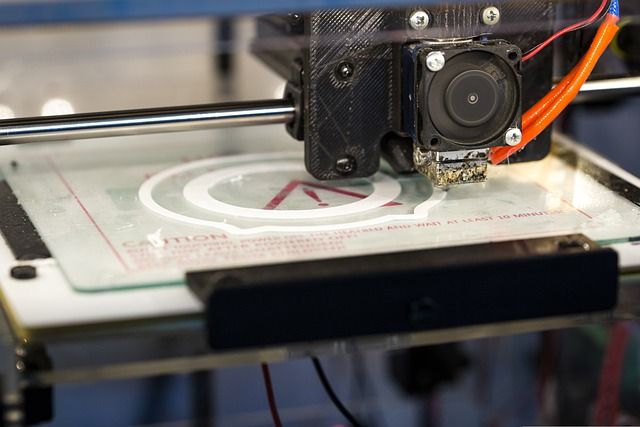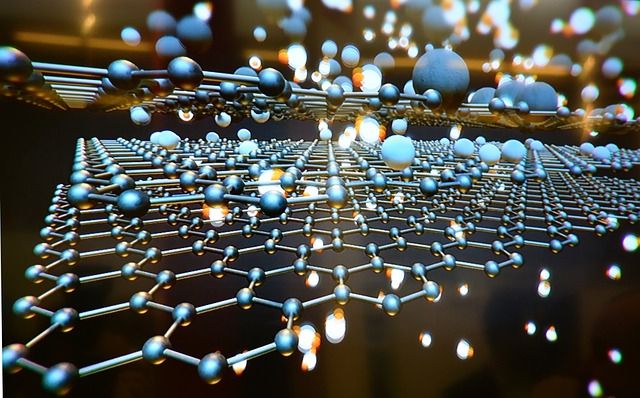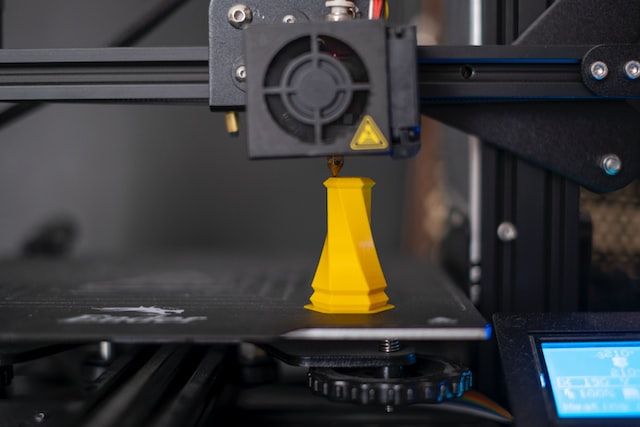Nanotechnology is already aiding the polymer industry by providing additional electrical conductivity, electromagnetic properties, thermal conductivity, abrasion resistance, chemical resistance, and mechanical strength. However, nanomaterials can now also help 3D printing by lowering costs through faster curing times and enabling more complex forms with higher quality.
Thanks to their thermal stability and excellent mechanical strength, thermosetting polymers are widely used in a wide variety of products, such as aeroplane parts, household appliances, construction materials, and electronic devices. However, they have always had their drawbacks, increasing costs through labour-intensive application and long curing times. Their use is also restricted by the physical limits of mould design.
Many of these problems can be resolved by additive manufacturing, which is why cross-linkable resin experts have been paying close attention to production processes such as Direct Ink Writing (DIW).

In an extrusion-based DIW technique a liquid (the ‘ink’) is dispensed through a nozzle onto a surface along predetermined routes to create 3D structures. However, maintaining the shape of the structure during printing and curing has always been a challenge, especially for more intricate forms and smaller components.
This problem has now been solved by an international collaboration led by scientists from Texas A&M University.
The team’s research, now published in the journal Carbon, states that, “the use of a co-planar radio frequency applicator to generate an electric field, … can be used to rapidly heat and cure nano-filled composite resins as they are printed. This method avoids the need for an oven or post-curing step.”
The team had already found that carbon nanomaterials quickly heat up in response to RF at frequencies between 20 kHz and 300 GHz. So, they then reasoned that they could remove the need for large and expensive ovens to heat and cure printable resins by adding nanomaterials.

Testing found that an epoxide and curing agent with an added quantity of between three and seven wt% of multi-walled carbon nanotubes made a polymer that could be heated and then set in place by radio frequency [RF].
“In order to be suitable for DIW,” explains Laurie Winkless in her report in the journal Material Today, “an uncured resin should have a yield stress of between 1 and 100 Pa, with a high post-shear viscosity and storage modulus. Samples with 4, 5 and 7 wt% carbon nanotube [CNT] loading all fitted these conditions. The resin with 4 wt% also showed a rapid heating rate in response to RF (approaching > 100 °C in ~15 seconds at 1 W) and so the team chose to proceed with this sample for all experiments.”
The researchers then established a production process to print specific test shapes, with each phase of fabrication consisting of a print-and-cure cycle. After each layer had been extruded, it was allowed to partially cure using RF before any additional layer was deposited. This meant that each application took between 45 and 60 seconds in comparison to traditional DIW printing with oven-curing which can take as long as 12 to 24 hours for each layer.

Partial curing also allowed the structure to maintain a better morphology during printing, leading the team to construct ‘intricate, high-resolution shapes’ including a gear and a single-trace hexagon.
Additionally, resin bars produced with this method, “demonstrated a greater tensile strength than those created traditionally (23.1 MPa vs. 18.6 MPa).” This is due to the RF heating the sample from the inside out, removing air bubbles and creating a uniform shape with a smoother external surface. By comparison, SEM imaging revealed that conventionally printed samples had more cavities and dimples.
The process was also shown to be effective in fabricating three-dimensional shapes, such as a very thin, open cylinder.
It is hoped that the technology can be applied to most thermosetting polymers with testing still ongoing to determine the versatility of this novel manufacturing process.

“This work,” writes the team from Texas A&M University, Singapore Institute of Manufacturing Technology, and Bolu University in Türkiye, “facilitates rapid, free-form processing of commercial thermosets which establishes RF heating combined with DIW printing as a promising method for additive manufacturing of thermosetting systems with reduced processing time and energy requirements.”
Nanomaterials are a popular and cost-effective additive for a wide range of resins and polymers. Providing electrical conductivity, electromagnetic properties, thermal conductivity, abrasion resistance, chemical resistance, and mechanical strength.
They are now giving a further boost to 3D-print production. Saving manufacturers money on shorter curing times, while also allowing for more complex forms with improved quality.
Photo credit: Osman Talha Dikyar on Unsplash, Thirdman at Pexels, Seagul, Lutz Peter from Pixabay, & Gisela Merkurr
